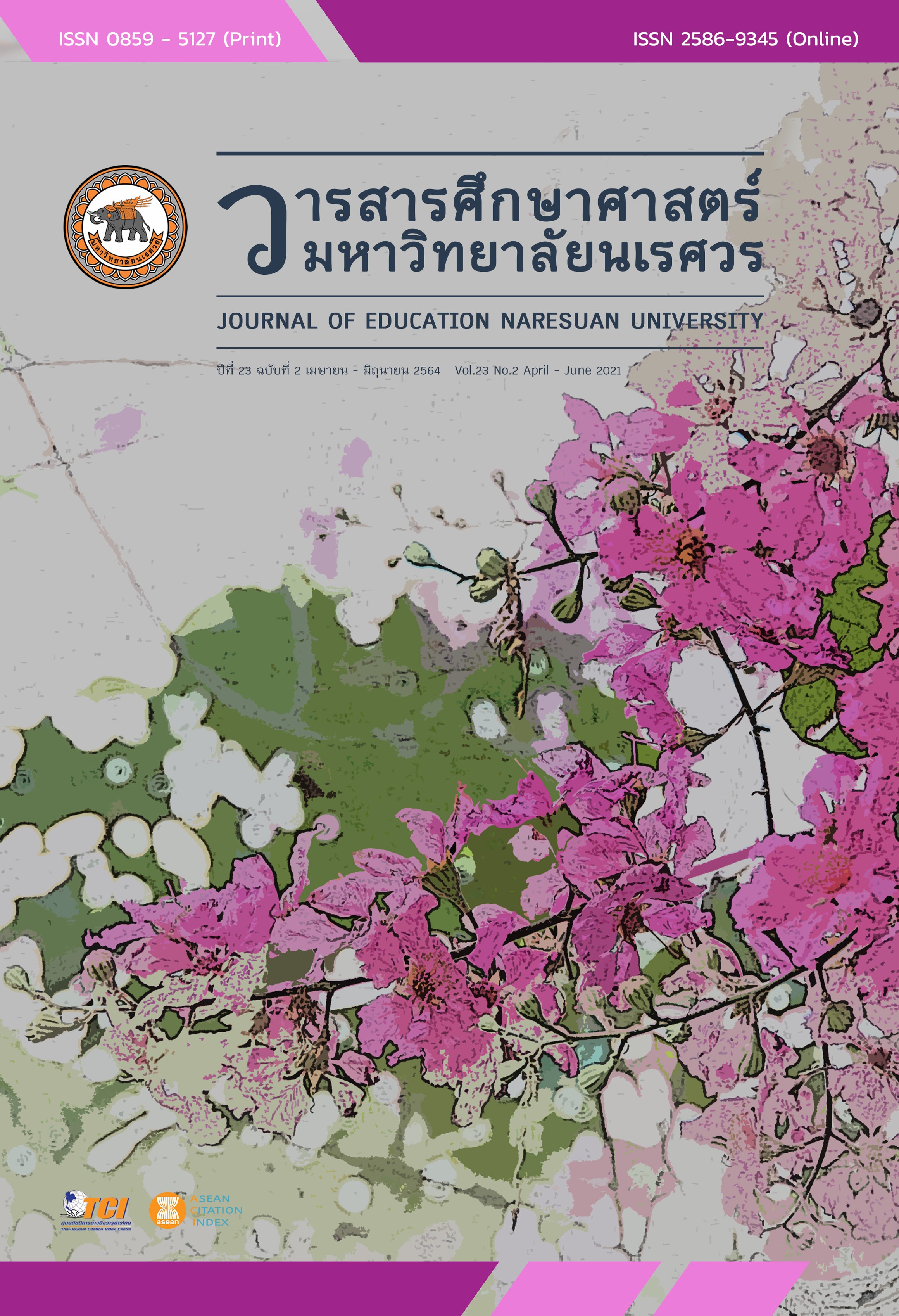THE RESULT OF USING MATHEMATICS ACTIVITIES BY CONSTRUCTIVISM THEORY ON SURFACE AREA AND VOLUME SUBJECT FOR MATTHAYOMSUKSA 3 STUDENTS OF DEMONSTRATION RAMKHAMHEANG UNIVERSITY SCHOOL ผลการจัดกิจกรรมการเรียนรู้คณิตศาสตร์ เรื่อง พื้นที่ผิวและปริมาตร ตามทฤษฎีคอนสตรัคติวิซึม ชั้นมัธยมศึกษาปีที่ 3 โรงเรียนสาธิตมหาวิทยาลัยรามคำแหง
Main Article Content
Abstract
This research is an experimental based research aimed to study the results of mathematics learning activities based on constructivism theories on surface area and volume. The samples consisted of 42 Mathayomsuksa three students at Ramkhamhaeng University Demonstration School. Using the cluster random sampling method. Research instruments consisted of the following: 1) lesson plans for mathematics learning activities based on constructivism theory on surface area and volume, 2) a four-choice learning achievement test, and 3) a form utilized for measuring student satisfaction with the instruction involving the mathematics learning activities based on constructivism theory. Using a technique of descriptive statistics, via, percentage, the researcher determined the efficiency level of instruction and study using the aforementioned learning activities during the experimental study and after its completion. Employing a technique of inferential statistics, the researcher compared differences between learning achievement prior to the commencement of the experimental study and after its completion through applications of the dependent samples t-test method. Findings are as follows; the instruction activities based on constructivism theory showed an efficiency level of 88.21/80.63, the mathematics academic achievement levels of the students after the completion of the experimental study was higher than prior to its commencement at the statistically significant level of .05, and finally the satisfaction with the instruction learning activities based on constructivism theory was also displayed at a high level.
Article Details
The owner of the article does not copy or violate any of its copyright. If any copyright infringement occurs or prosecution, in any case, the Editorial Board is not involved in all the rights to the owner of the article to be performed.
References
Auamjaroen, S. (2014). SU Model: Application of knowledge-based learning management. Academic Journal Varidian E-Journal, 7(3), 945-961. [in Thai]
Chimwong, N. (2008). Comparison of critical thinking and learning achievement mathematics department probability topics from grade 9 students that was applied with constructivism method and normal learning method (Master thesis). Maha Sarakham: Mahasarakham University. [in Thai]
Glasersfeld, E. von. (1996). Introduction: Aspects of constructivism. In Fosnot, C. T. (Ed.), Constructivism: Theory, perspective, and practice (pp. 3-7). New York: Teachers College Press.
Jonassen, D. H., & Murphy, L. R. (1999). Activity theory as a framework for designing constructivist learning environment. Educational Technology Research and Development, 47(1), 61–79.
Kaewsan, L., Suwatunpornkool, I., & Jaroensook, O. (2013). Results of using the constructivism learning method on creative thinking and mathematical creativity of Prathomsuksa 6 students. Journal of graduate studies, Suan Sunandha Rajabhat University, 3(6), 376-385. [in Thai]
Khammani, T. (2007). Teaching strategy. Bangkok: Chulalongkorn University Press. [in Thai]
Lalley, J. P., & Miller, R. H. (2007). The learning pyramid: Does it point teachers in the right direction? Education, 128, 64-79.
Limtasiri, O. (2011). Integrated learning management. Bangkok: Ramkhamhaeng University Press. [in Thai]
Ministry of Education. (2008). Learning management guidebook, mathematics department. Bangkok: The Agricultural Co-operative Federation of Thailand. [in Thai]
Nationnal Institute of Educational Testing Service (Public Organization). (2016). O-NET test results of Matayomsuksa 3. Retrieved from http/www.niets.or.th [in Thai]
Suksuwan, V., Sompong, J., & Onthanee, A. (2017). Developing learning activities based on constructivism methods to encourage students to use the ability to think on single linear equation for students of Mathayomsuksa 1. Journal of Education Naresuan University, 19(3), 298-312. [in Thai]
Yamsaeng, N. (2012). Mathematical teaching behavior 1. Bangkok: Ramkhamhaeng University Press. [in Thai]


